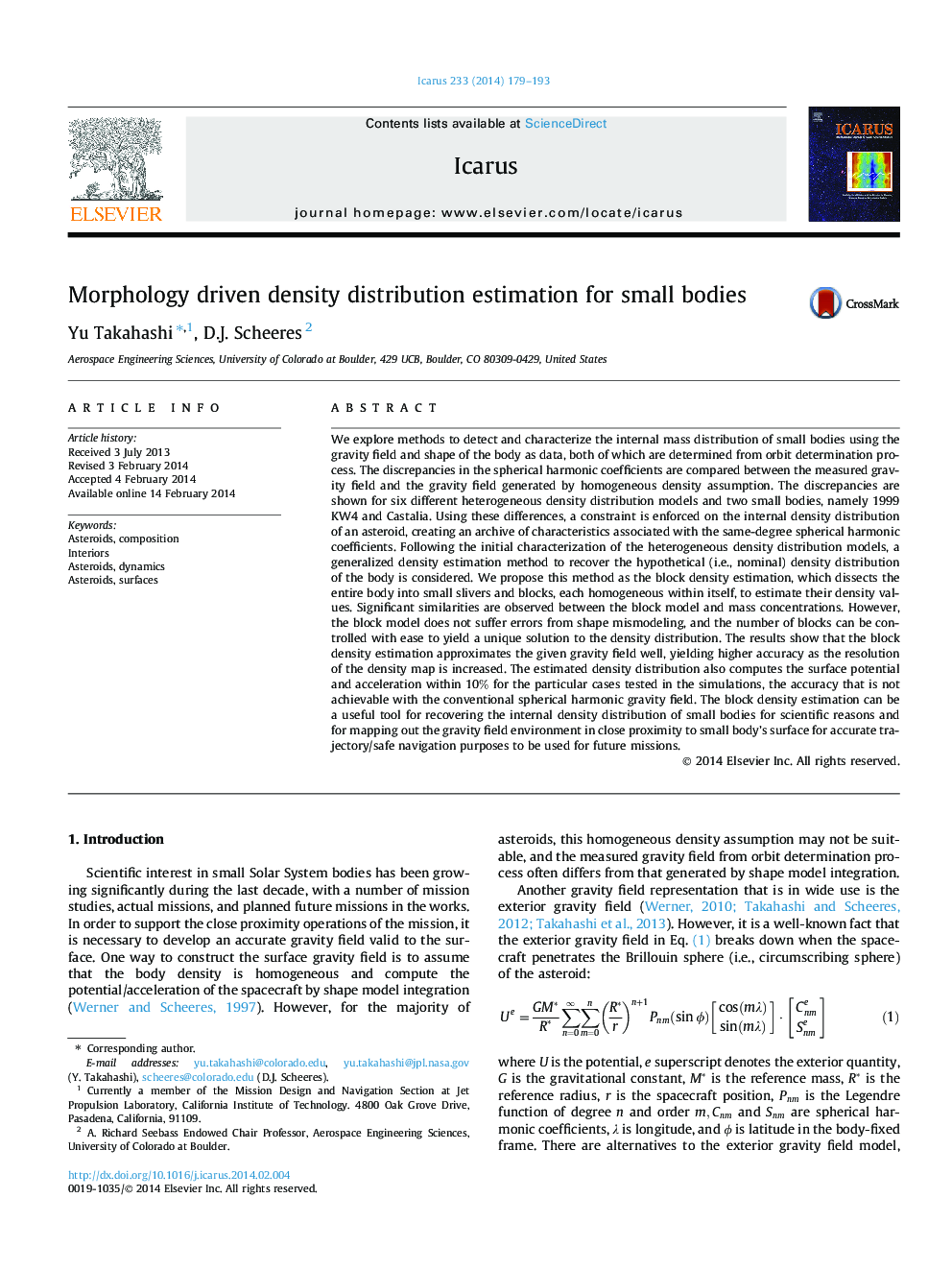| Article ID | Journal | Published Year | Pages | File Type |
|---|---|---|---|---|
| 8138333 | Icarus | 2014 | 15 Pages |
Abstract
We explore methods to detect and characterize the internal mass distribution of small bodies using the gravity field and shape of the body as data, both of which are determined from orbit determination process. The discrepancies in the spherical harmonic coefficients are compared between the measured gravity field and the gravity field generated by homogeneous density assumption. The discrepancies are shown for six different heterogeneous density distribution models and two small bodies, namely 1999 KW4 and Castalia. Using these differences, a constraint is enforced on the internal density distribution of an asteroid, creating an archive of characteristics associated with the same-degree spherical harmonic coefficients. Following the initial characterization of the heterogeneous density distribution models, a generalized density estimation method to recover the hypothetical (i.e., nominal) density distribution of the body is considered. We propose this method as the block density estimation, which dissects the entire body into small slivers and blocks, each homogeneous within itself, to estimate their density values. Significant similarities are observed between the block model and mass concentrations. However, the block model does not suffer errors from shape mismodeling, and the number of blocks can be controlled with ease to yield a unique solution to the density distribution. The results show that the block density estimation approximates the given gravity field well, yielding higher accuracy as the resolution of the density map is increased. The estimated density distribution also computes the surface potential and acceleration within 10% for the particular cases tested in the simulations, the accuracy that is not achievable with the conventional spherical harmonic gravity field. The block density estimation can be a useful tool for recovering the internal density distribution of small bodies for scientific reasons and for mapping out the gravity field environment in close proximity to small body's surface for accurate trajectory/safe navigation purposes to be used for future missions.
Related Topics
Physical Sciences and Engineering
Earth and Planetary Sciences
Space and Planetary Science
Authors
Yu Takahashi, D.J. Scheeres,
